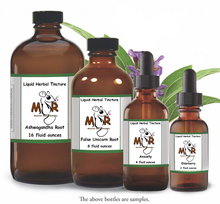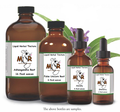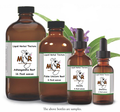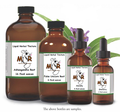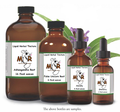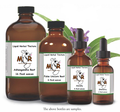Devil’s claw (Harpagophytum procumbens): Because it is rich in potent anti-inflammatory and analgesic compounds, most researchers credit the iridoid glycosides in devil’s claw for this herb’s pain-relieving potential. During one double-blind, placebo-controlled trial, 63 participants with lower-back pain took devil’s claw or a placebo for four weeks. At the end of the study, those taking the herb reported a significant improvement in muscular pain and stiffness compared to the placebo group. While the recommended dosage to alleviate pain is 100 to 250 mg three times a day, don’t take this herb if you suffer from ulcers or gallstones or if you’re taking warfarin.
Nettle Leaf (Urtica Diocia) Strangely enough, this prickly plant has shown promising evidence as a means of actually relieving discomfort, joint pain in particular. It helps relieve the pain in sore joints because it contains active compounds that reduce inflammatory cytokines. Cytokines, such as the strangely named TNF-α and IL-1B, are messengers between cells, and cause inflammation due to an immune response. The compound is in the nettle leaves, and inhibit the protein that activates TNF-α and IL-1B in the synovial tissue lining the joints, where they would cause the swelling and pain.
Licorice Root (Glycyrrhiza Glabra) Do you suffer from arthritis pain and inflammation? Individuals that suffer from osteoarthritis and rheumatoid arthritis benefit from taking a form of Licorice root. It can reduce the inflammation and swelling that arthritis suffers endure.
Rosemary Leaf (Rosemarius Officinalis) Stimulates circulation and eases pain by increasing blood supply where applied. Aids fat digestion. Good for aching joints and rheumatic pains.
Burdock Root (Arctium Lappa) Burdock root tea is often used to treat arthritis and other illnesses noted for swelling around the joints. Burdock reduces swelling, reliving pain from these conditions.
Cayenne Pepper (Capsicum Minimum) Cayenne contains a compound called capsaicin. Capsaicin is the ingredient that gives peppers their heat. Generally, the hotter the pepper, the more capsaicin it contains. In addition to adding heat to the pepper, capsaicin relieves pain.
Turmeric (Curcuma longa): Turmeric is one of the most powerful antioxidants and has the ability to remove free-radical scavengers circulating within the body that may be aggravating the condition. In a double-blind clinical trial conducted by New York’s Presbyterian Hospital and Cornell University, arthritis patients given turmeric reported a significant decrease in inflammation. The reason behind the herb’s effectiveness is curcumin, the compound that gives turmeric its deep-yellow color. Curcumin directly inhibits the COX-2 enzyme and the formation of prostaglandins. For chronic pain, take 400 to 600 mg of a standardized curcumin supplement three times daily.
Willow bark (Salix spp.): Often called “herbal aspirin,” willow bark is a natural source of salicylic acid — the active compound in aspirin. When they compared it to Vioxx, Australian researchers found willow bark just as effective as the pharmaceutical drug for pain and inflammation, but without its negative side effects. The recommended dosage is 1,000 to 3,000 mg of the powdered herb daily as needed. Although willow bark has been safely used for 3,500 years, do not use the herb if you are allergic to aspirin. Rarely, willow can cause stomach upset in aspirin-sensitive individuals; reduce the dose or discontinue the herb if this occurs. People taking anticoagulant or antiplatelet medications should also avoid using willow bark.
Ingredients: Devils Claw tincture, Nettle Leaf tincture, Licorice root tincture, Rosemary leaf tincture, Burdock root tincture, Cayenne tincture, Turmeric tincture, White Willow Tincture and 100% proof grain alcohol. This is a strong tincture with no water added!
 Loading... Please wait...
Loading... Please wait...








